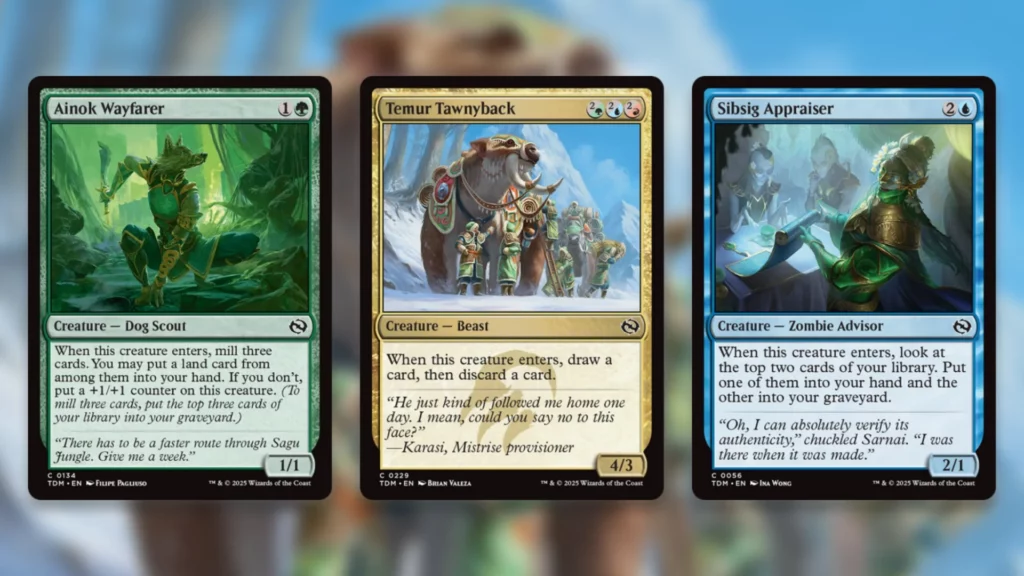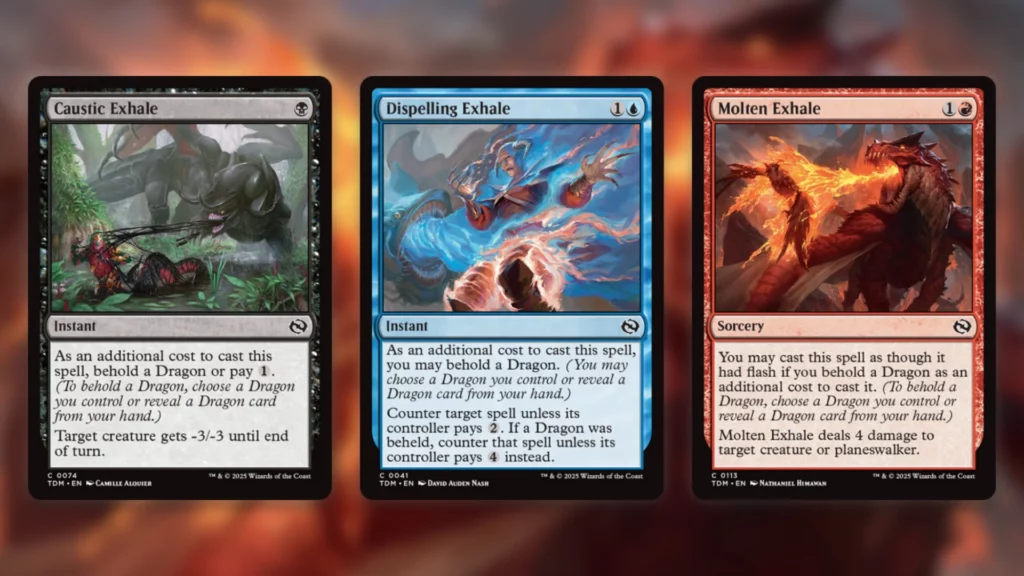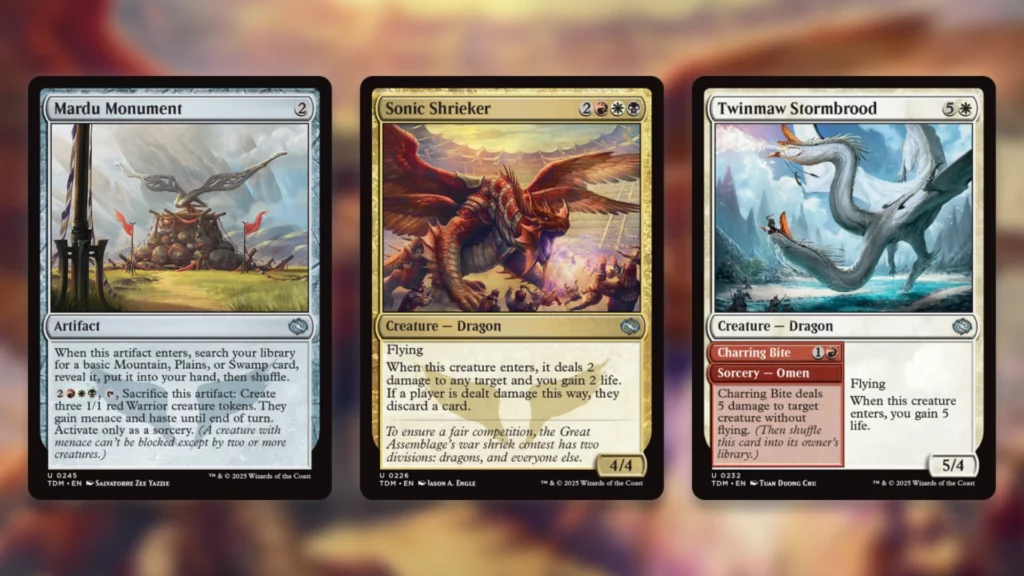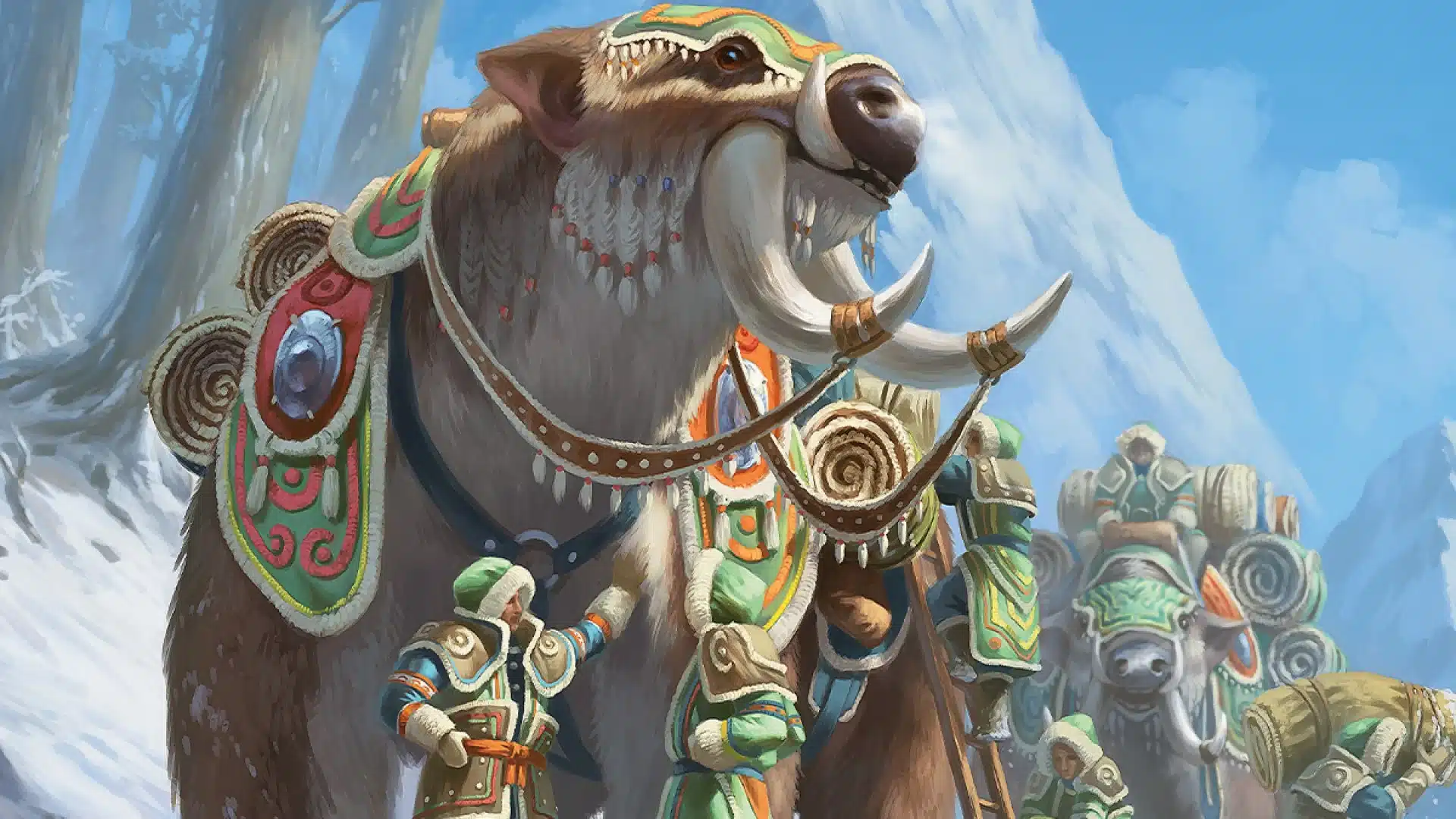While the set’s official physical release isn’t until tomorrow, plenty of Magic: The Gathering players are already sinking their fangs into Tarkir: Dragonstorm. The new cards have started putting up competitive results already, which bodes very well for the set’s future. On top of that, players on both MTG Arena and MTG Online are jamming their way through Tarkir: Dragonstorm Limited games. Based on the early data coming in, the best performers in the format aren’t quite what you’d expect.
Though it’s not obvious at first glance the set is actually quite heavy on graveyard interaction, which bears out in the best-performing common creatures. Much more obvious are the set’s Dragon synergies, though few predicted just how good they’d be in Limited. If you’re planning to dive into a Draft or Sealed game soon, make sure you keep an eye out for these top-tier contenders.
The Unexpected Stars Of Tarkir: Dragonstorm Limited

When evaluating any Limited format, it’s best to put the most weight in the common slot. Rares and mythics aren’t reliable pulls, after all, and even uncommons can be surprisingly scarce. Commons are the cards that will have the biggest impact, on average, across all of your Limited games.
In Tarkir: Dragonstorm Limited specifically, the best creatures in the common slot are not what you’d expect at all. Many predicted the common Omen Dragons cycle would dominate here, but instead we have a trio of humble card advantage/selection pieces. Sibsig Appraiser tops the charts, sitting at a 61.4% Win Rate in Hand (WRIH) rate according to data aggregate site 17Lands. This is actually the best common in the set overall, creature or not, beating out all others by a significant margin.
The next-best common creatures in the format are Ainok Wayfarer and Temur Tawnyback, with 59.4% and 58.9% WRIH stats, respectively. Looking at these two alongside Appraiser, a pattern is immediately obvious. All three are creatures that can put cards into your graveyard while generating you card advantage at the same time. Appraiser’s is guaranteed, which explains its dominant position. The other two are more conditional, though the rates you get on their bodies are a bit better.
Why are cards like this doing so well? It likely comes down to the Harmonize and Renew mechanics. Both work directly from the graveyard, which means all of the above cards can essentially ‘draw’ you extra cards by binning something with either mechanic. Both of these mechanics are really solid, too, with the likes of Champion of Dusan and Unending Whisper being dominant commons in their own right. Card selection is extra-important in three-color formats, too.
Here Be Dragons

Over in the noncreature common camp, another pattern emerges. The top four noncreature commons in Tarkir: Dragonstorm Limited so far all hail from the Exhale cycle. Dispelling and Molten Exhale sit at 59.6% WRIH, Caustic at 58.7%, and Piercing at 58.5%. Osseous Exhale lags behind slightly, but still sits at a very respectable 55.9%. It’s rare to see an entire cycle dominate a category like this, so the Exhales must be something special indeed.
It’s actually not hard at all to see why this is the case. The Exhale cycle displays that weird Magic: The Gathering phenomenon wherein their potential for upside makes them look worse than they are. Because they all have Behold, your brain is tricked into thinking you need Dragon synergy in order to make these work. If you ignore that aspect completely, however, you’ll find that these are all incredibly efficient spells even without it. In fact, they’d all make pretty solid uncommons in most sets.
Caustic, Molten, Piercing, and Osseous are just great removal spells in their respective colors. If you have a Dragon to Behold they’re excellent, but they do just fine without one. Even in a set with removal as good as Tarkir: Dragonstorm, these cards still stand out. Dispelling Exhale is scarily close to Mana Leak at a base level, and even better when Beheld. It’s excellent in its own right, particularly in more tempo-driven blue decks like Jeskai.
Interestingly, the stats on common Dragons don’t seem to reflect those of these Behold cards. The best of these is Sagu Wildling at a 58.3% WRIH, but the rest are all at 56.3% or below. Perhaps running your Exhales unsupported is the optimal play in the format.
The Mardu Comeback

If the commons that are currently dominating in Tarkir: Dragonstorm Limited are interesting, the uncommons are equally so. While the creatures we looked at above suggest Temur and Sultai are the big winners of the set, the uncommon slot is all about Mardu.
Incredibly, the best uncommon in the set by WRIH is Mardu Monument, at 63.0%. Every other uncommon in the set, and most of the rares and mythics at that, are performing worse than this silly-looking two-mana fixing piece currently.
At 62.2% sits Sonic Shrieker, an extremely powerful uncommon Dragon in Mardu colors. A flier with damage, lifegain and discard bundled together like this would shine in any Limited format, but clearly the extra fixing in Dragonstorm has pushed it higher. It’s worth noting that Mardu Devotee, a common one-drop that fixes in Mardu colors, is also one of the best commons in the set at 58.9% WRIH.
Other great Mardu uncommons, like Zurgo’s Vanguard, command high WRIH rates too. Clearly, the color combination is getting a lot of love in Limited right now. That makes perfect sense: Mardu is extremely aggressive in this set, which lets it prey on decks trying to run clunky rares or big, dumb Dragons. It’s also capable of playing such Dragons itself, like Sonic Shrieker or Twinmaw Stormbrood. While the format is removal-heavy, Mobilize makes it easy for Mardu to get out of control despite that.
Of course, the above should all be taken with a sizable pinch of salt. We’re only a couple of days into Tarkir: Dragonstorm Limited, so the format still has plenty of room to evolve as players optimize Draft picks and strategies.

